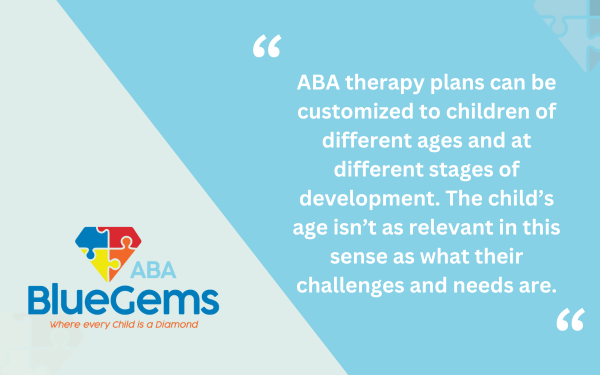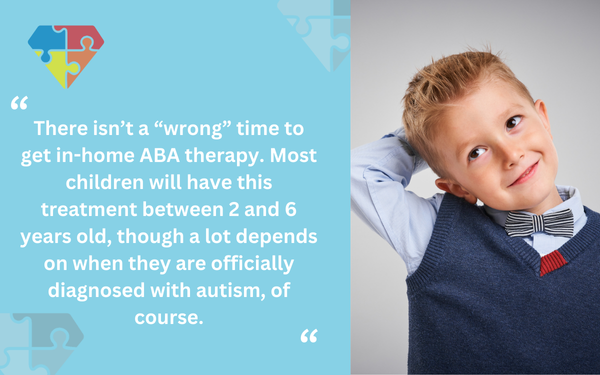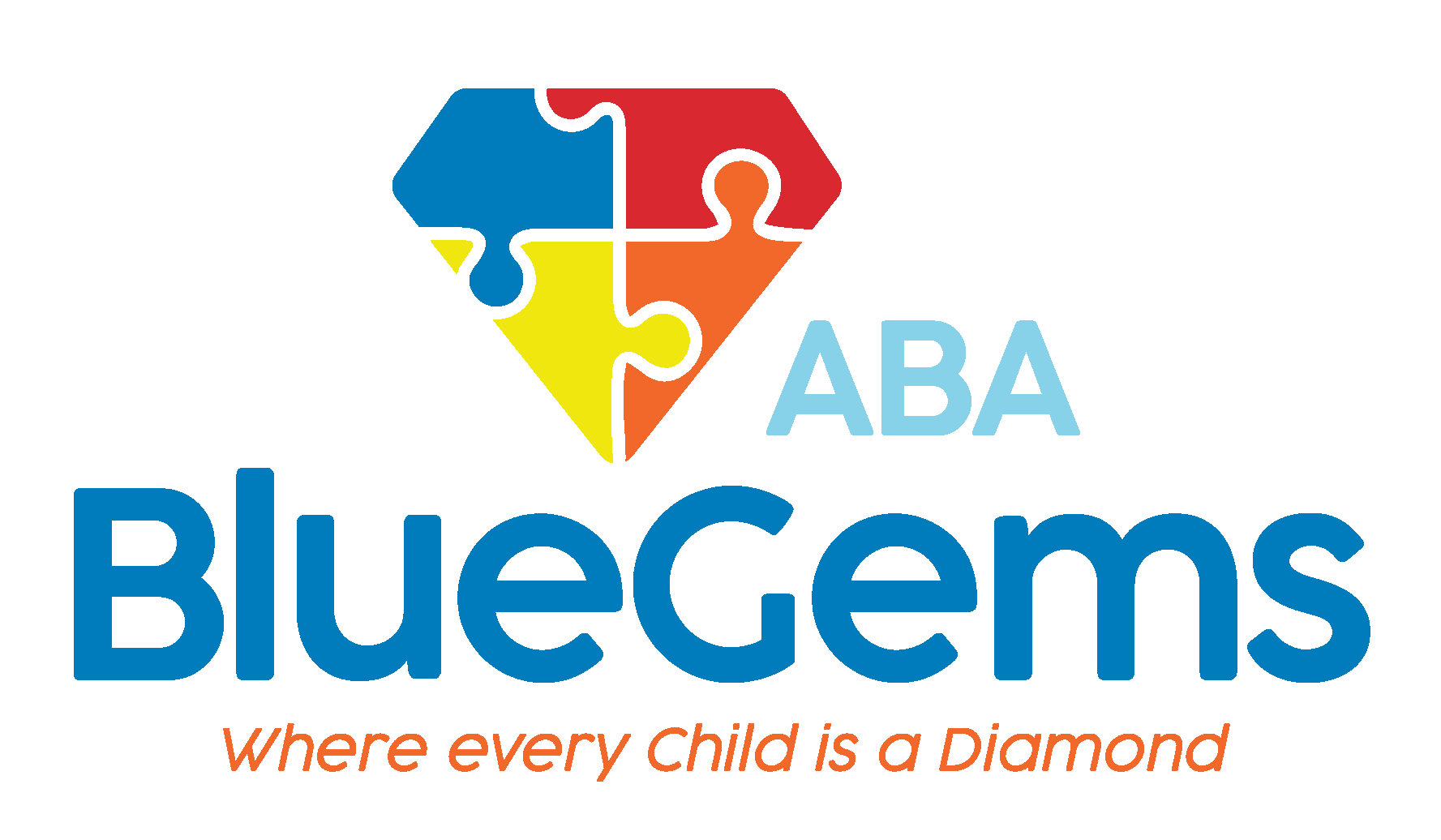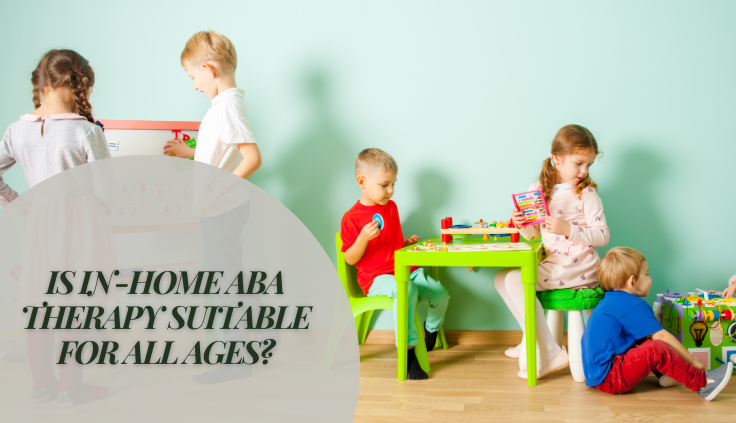Is In-Home ABA Therapy Suitable for All Ages?
Children with autism spectrum disorder (ASD) can benefit greatly from applied behavior analysis, especially when treatment plans can begin from an early age.
Also known as ABA therapy, this science-based approach to learning helps children with autism build social and communication skills they often struggle with, while also equipping them with tools to modify certain negative and/or harmful behaviors.
ABA therapy can be administered in a clinical setting or in the child’s home. The latter provides a wealth of benefits to both the child, parents and other family members because of the convenience and familiar environment that it provides.
In-home ABA therapy is particularly great for younger children who haven’t reached school-age just yet. But, is in-home ABA therapy suitable for all ages?
Below, we’ll discuss what in-home ABA therapy is and if it’s only for people of certain ages.
Table Of Contents
What is In-Home ABA Therapy?
With In-home ABA therapy, your child’s therapist will come to your home for most sessions. Typically speaking, you will set aside a separate room or area of the house where the therapy can be administered, which helps to reduce potential distractions and help your child stay focused.
There, the therapist will work one-on-one with your child, using various strategies and tools at their disposal to target certain skills or behaviors. Based on early observations of the child and discussions with the parents, the ABA therapy team will have a set treatment plan in place that will help your child reach certain goals.
A big benefit of having the therapy administered in your home is that your child will be familiar with this environment. Their toys and other objects they like will be there, which reduces potential issues with changing routines, and the skills can be taught in practical ways that can be applicable to their daily lives.
Younger children can especially benefit from this as they build the skills that will be necessary for them to successfully integrate into a school environment, for instance, if that is one of their goals.
| Benefit | Description | Impact |
|---|---|---|
| Familiar Environment | Toys and routine surroundings reduce anxiety | Improved engagement and learning |
| Reduced Distractions | Therapy space set aside for sessions | Enhanced focus during therapy |
| Customized Goals | Treatment tailored to child’s behaviors | More effective progress tracking |
Is In-Home ABA Therapy Only for Young Children?
A hallmark of ABA therapy is the fact that it is highly customizable. While the core principles will remain the same for all patients, each treatment plan will be personalized to each individual’s unique strengths and weaknesses.
For example, if a patient responds particularly well to getting extra time with one of their favorite toys, it will be used as a reward to encourage them to learn new skills and modify behaviors.
Along the same lines, ABA therapy plans can be customized to children of different ages and at different stages of development. The child’s age isn’t as relevant in this sense as what their challenges and needs are.

This means that there’s really no age limit for ABA therapy, whether it’s administered in the child’s home or in a clinical setting.
| ABA Therapy Feature | Flexibility by Age | Application |
|---|---|---|
| Reward Systems | Adjustable to age-specific motivators | Toy time, praise, breaks |
| Treatment Goals | Age-appropriate milestones | Social, communication, behavioral |
| Developmental Stage | Custom support plans | Early childhood to teens |
What Ages Do Children Typically Get In-Home ABA Therapy?
Ideally, children with ASD will begin receiving in-home ABA therapy when they are young, as these are the crucial developmental years. The earlier, the better in terms of ABA therapy, as this is when a child’s brain is most pliable.
That being said, there isn’t a “wrong” time to get in-home ABA therapy. Most children will have this treatment between 2 and 6 years old, though a lot depends on when they are officially diagnosed with autism, of course.

As mentioned before, in-home ABA therapy is often a great way to start the treatment, before children are typically exposed to environments outside of the home on a regular basis. In this way, the therapy can serve as the building blocks for other environments such as daycare or school as the child gets older.
In-home ABA therapy can even transition into clinic-based ABA therapy as a way to take smaller steps toward a typical school environment — if that is something that would be beneficial for the child.
Your child’s ABA therapy team will certainly discuss with you the best path forward, and that will depend greatly on their development, the severity of their ASD and their progress toward goals.
| Age Group | Typical Therapy Start | Key Considerations |
|---|---|---|
| 2–3 Years | Early intervention phase | Brain pliability, foundational skill-building |
| 4–6 Years | Preschool/Kindergarten preparation | Social readiness, structured learning |
| 7+ Years | Flexible entry point | Support with school transitions, peer interactions |
Blue Gems ABA Provides Top-of-the-Line In-Home ABA Therapy
In-home ABA therapy is suitable for all ages, though it’s especially beneficial to younger children. That being said, any child can be a good candidate for ABA therapy, since their treatment plan can be customized to their age, developmental stage and specific needs.
At Blue Gems ABA, we administer ABA therapy in patients’ homes, helping them build social and communication skills in a familiar environment and in practical ways.
To learn more, please contact us today.




